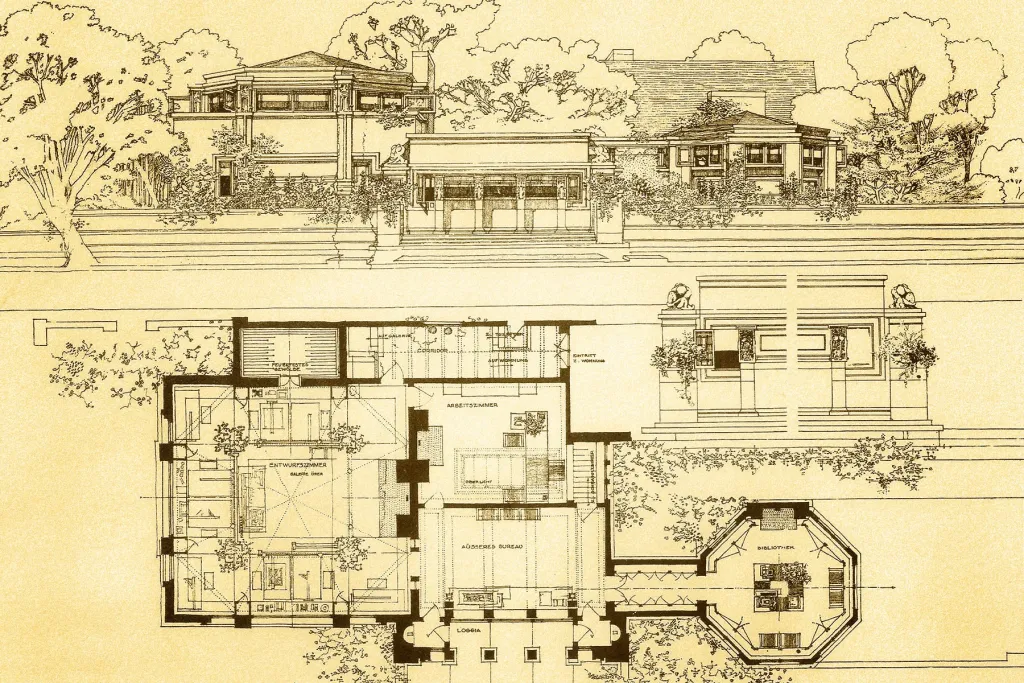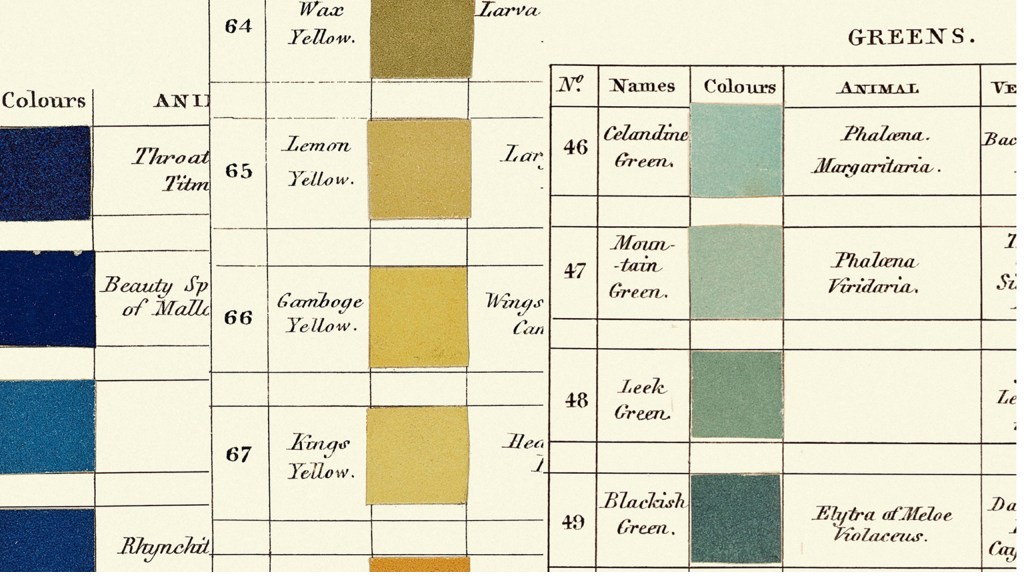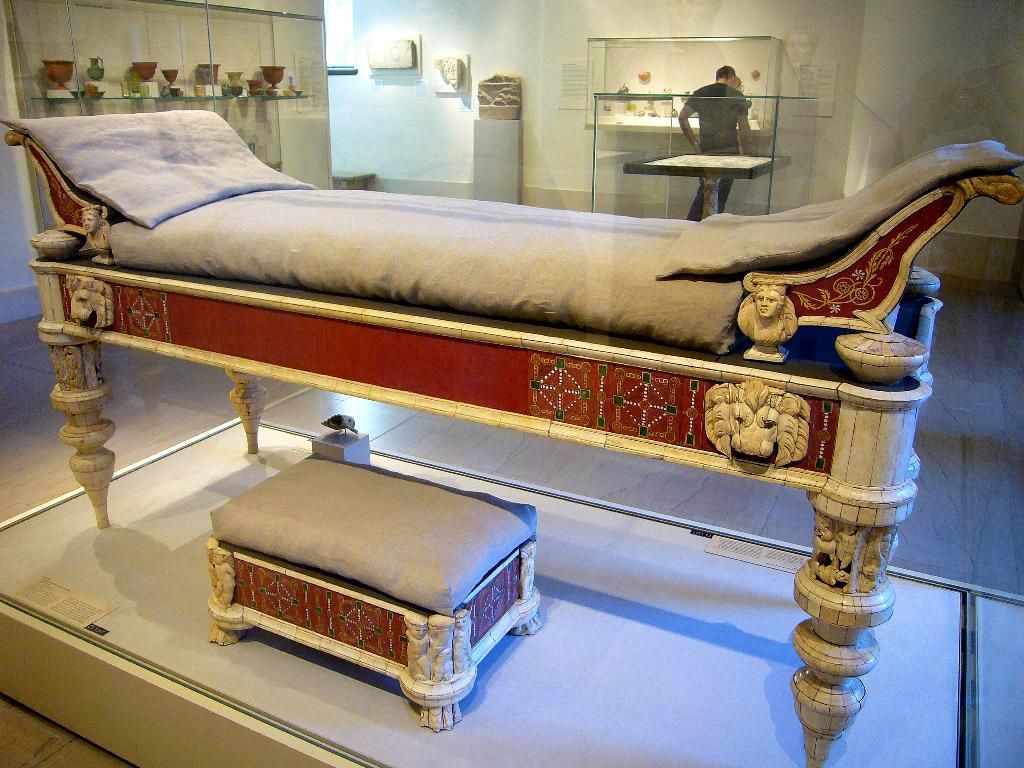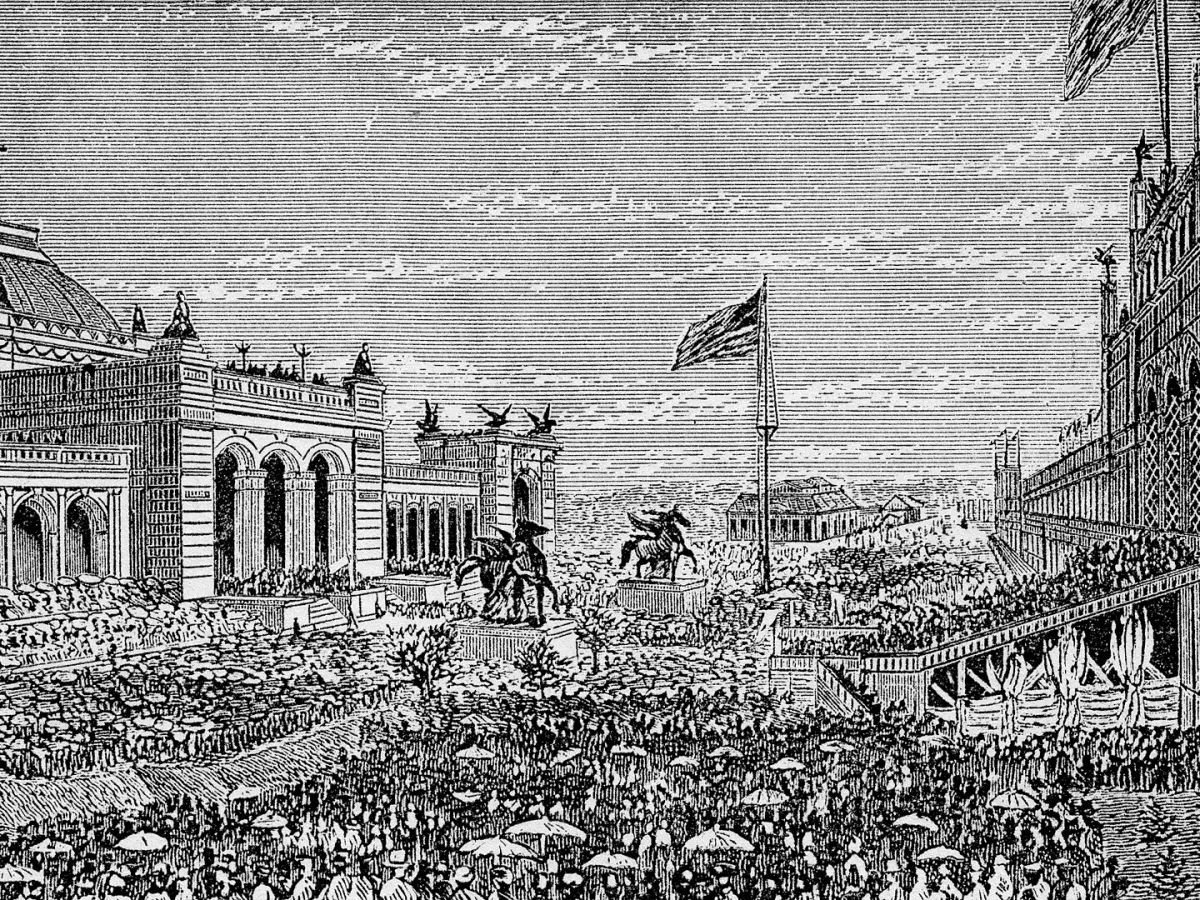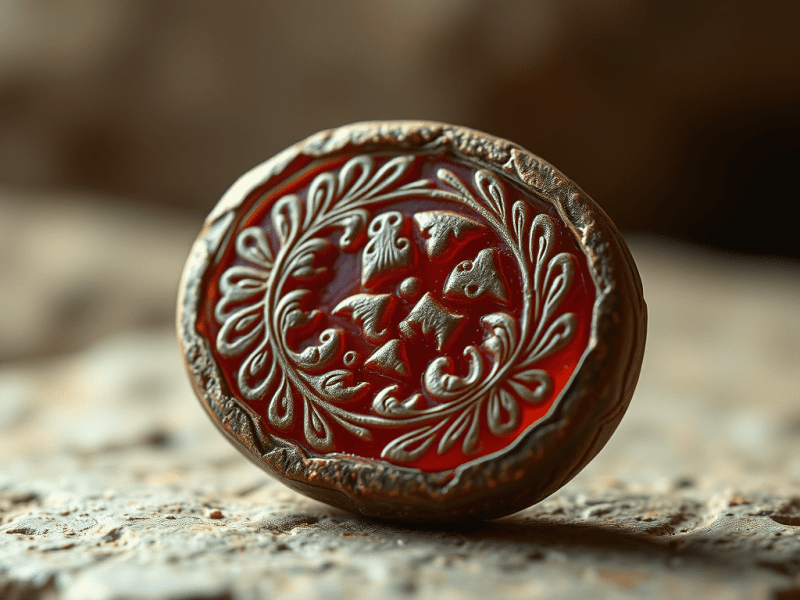Tachisme is frequently used interchangeably with art informel or Lyrical Abstraction to refer to the abstract art movement that flourished in Europe, particularly France, in the late 1940s and 1950s. To separate the Impressionists’ work from the more studied technique of the Impressionists, Félix Fénéon coined the term “tachiste” in 1899. The name is derived from a French word that refers to a blot, stain, or mark, and it underlines the work’s spontaneous gestural aspect. It thus refers to the branch of Informel Art that is closest to automatism in spirit and technique.
The painted marks are presented as virtually unmediated by the conscious mind and directly counterpart to American Abstract Expressionists like Jackson Pollock, Franz Kline, and Sam Francis. Though the phrase is commonly used more broadly, it best describes the work of artists such as Hans Hartung, Wols, Georges Mathieu, Henri Michaux, and Pierre Soulages when used in this way. In works like Capetians Everywhere, Mathieu, for example, used a gestural, calligraphic approach (1954; Paris, Pompidou). On the other hand, other painters linked with Art informel, such as Jean Bazaine, Alfred Manessier, and Serge Poliakoff, preferred a more controlled approach to composition and colour application.



Exhibitions
- 2021 – Justine Varga – Tachisme | Tolarno Galleries
- 2008 – Tachisme: Abstract Expressionism – Nutley Free Public Library
Design Store
Books| History of Art
You may also be interested in
Ric Gath: The Reluctant Revolutionary of Surf Safety
Ric Gath, an Australian surfer-inventor, created the first surf-specific helmet in 1989, redefining surf safety and leaving a lasting legacy…
Keep readingThe Allure of Agate: History and Modern Uses
The agate cup in the V&A Museum illustrates the stone’s historical significance in art. Valued for beauty and versatility, agate…
Keep readingInternational Exhibitions of the Victorian Period: Tastemakers of the 19th Century
Victorian exhibitions showcased industrial and artistic achievements, influencing global design trends, public taste, and cultural values, while paving the way…
Keep readingExploring Italian Gothic Design: Art and Architecture
Italian Gothic architecture, flourishing from the 12th to 16th centuries, blends Northern influences with classical heritage, showcasing elaborate façades, functional…
Keep readingThe Hoosier Kitchen Cabinet: Revolutionizing the American Kitchen
The Hoosier Kitchen Cabinet revolutionized early 20th-century kitchen efficiency, empowering homemakers and becoming a beloved vintage design icon.
Keep readingAcella Curtains: A Mid-Century Modern Statement in Textile Design
The 1961 advertisement for Acella curtains highlighted their synthetic material, bold geometric patterns, and vibrant colors, embodying mid-century modern design…
Keep readingExploring Lampblack in Decorative Arts
Lampblack powder, derived from soot, is a versatile black pigment widely used in inks, paints, calligraphy, and various decorative arts…
Keep readingThe Legacy of Aladdin Kerosene Lamps: Innovation and Collectibility
Aladdin lamps, innovated by Victor Johnson, revolutionized kerosene lighting with superior brightness and efficiency, becoming collectable treasures noted for their…
Keep readingThe Tarot: A Pictorial Journey in the Applied and Decorative Arts
The Tarot, a historical artistic and divinatory tool, blends pictorial design, symbolism, and craftsmanship, evolving through centuries while inspiring contemporary…
Keep readingThe Wasmuth Edition: Frank Lloyd Wright’s Architectural Magnum Opus
The Wasmuth Portfolio, published in 1910, introduced Frank Lloyd Wright’s influential designs to Europe, significantly impacting modernist architecture and inspiring…
Keep readingElegant Living with ILSE Furniture – The Essence of 1960s Modernism
ILSE Möbel, a notable 1960s German furniture manufacturer, combined quality craftsmanship and modernist design, creating iconic coffee tables and versatile…
Keep readingPye Model CS17: A Mid-Century Masterpiece by Robin Day
The Pye Model CS17, designed by Robin Day in 1956, showcased modern aesthetics and functionality, influencing mid-century design and becoming…
Keep readingThe Fagus-Werk Sofa by Walter Gropius: A Bauhaus Masterpiece
The Fagus-Werk Sofa, designed by Walter Gropius in 1911, embodies Bauhaus principles through its minimalist design, functional form, and lasting…
Keep reading56 Ecclesiastical Art and Vestments Terms and Definitions
The content outlines various ecclesiastical vestments, sacred vessels, and art used in Christian traditions, detailing their functions and significance in…
Keep readingElectroplate and Electroplating: A Revolutionary Manufacturing Process
The evolution of electroplating by Elkington & Co. transformed affordable luxury in 19th-century home goods, enhancing craftsmanship and accessibility while…
Keep readingExploring the Legacy of Arthur Heygate Mackmurdo in Design
Arthur Heygate Mackmurdo (1851–1942) was an influential English architect and designer, pivotal in the Arts and Crafts Movement, shaping modern…
Keep readingEurodomus 4: Design Trends of the 1970s
The Gufram booth at Eurodomus 1972 featured Studio 65’s radical designs, including the Bocca sofa, Cactus coatrack, and Attica series,…
Keep readingExploring Janus: Symbolism in Architecture and Design
Janus, the Roman god of gates, doorways, transitions, and time, embodies the dual nature of beginnings and endings. His distinctive…
Keep readingThe Journal of Decorative Art (1881–1937): A Chronicle of Design and Craftsmanship
The Journal of Decorative Art, published from 1881 to 1949, was crucial for decorators, showcasing evolving design movements and techniques,…
Keep readingThe Decorative Folding Screen: A Fusion of Art and Function in Interior Design
Folding screens, originating from ancient China, blend aesthetics and functionality in interior design, evolving into versatile room dividers and artistic…
Keep readingThe Vibrant World of Gaudy Pottery: Dutch, Ironstone, and Welsh
The decorative arts showcase the Gaudy ceramics of the 19th century, highlighting three distinct styles—Gaudy Dutch, Gaudy Ironstone, and Gaudy…
Keep readingKey Features of Scandinavian Modernism
Scandinavian Modernism, emerging post-World War II, emphasizes functionality, natural materials, neutral colors, and light, promoting well-being and timeless design principles…
Keep readingNeo-Liberty: Reviving Craft and Ornamentation in Italian Design
Neo-Liberty emerged in the late 1950s as a reaction against Modernism, emphasizing ornamentation and craftsmanship through iconic designs like the…
Keep readingThe Evolution of Systems Furniture: Functionality Meets Flexibility
Systems furniture has revolutionised the way we design and utilize interior spaces. Combining modularity, adaptability, and efficiency, this design concept…
Keep readingNeoplasticism: The Geometry of Purity in Art and Design
Neoplasticism, founded by Piet Mondrian and Theo van Doesburg in 1917, sought universal visual language through geometric abstraction, primary colors,…
Keep readingWild Man Corbel Bracket: A Guardian of the Past
The Wild Man corbel bracket exemplifies medieval timber-framed architecture’s blend of symbolism and functionality, reflecting cultural values and protective beliefs…
Keep readingThe Cult of the Kimono: A Fusion of East and West (1905–1915)
The early 20th century saw Western fascination with the kimono drive cultural exchange, influencing fashion, interior design, and global aesthetics…
Keep readingThe Evolution of American Design Principles
The American Design Ethic combines functionality, innovation, and aesthetics, evolving from colonial craftsmanship to modern streamlined objects, reflecting societal values…
Keep readingThe Brilliance of Swedish Glass, 1918-1939: An Alliance of Art and Industry
Between 1918 and 1939, Swedish glass emerged as a global design leader, blending artistry and functionality, showcasing innovation, unique techniques,…
Keep readingThe Evolution of Vase Design Through Ages
Vase design has evolved from ancient functional objects to artistic masterpieces, reflecting cultural values and technologies, showcasing a journey through…
Keep readingFauvism and the Decorative Arts: A Vibrant Legacy
Fauvism was a transformative 20th-century art movement known for its bold colors and emotional expression, significantly influencing decorative arts, textiles,…
Keep readingThe Impact of Non-Figurative Arts on Early Twentieth Century Decorative Arts
Non-figurative arts significantly transformed early 20th-century decorative arts by introducing abstract aesthetics, influencing furniture, textiles, and architecture through geometric design…
Keep readingGerman Expressionism and Its Impact on the Decorative Arts of the Early 20th Century
German Expressionism, a 20th-century movement, emphasized emotional depth, interdisciplinary integration, and urban life, influencing design through innovative materials and holistic…
Keep readingItalian Rationalism: The Essence of Modernist Design
Italian Rationalism, emerging in the 1920s-1930s, emphasized logic and functionality in architecture and decorative arts, influencing contemporary minimalist design and…
Keep readingFurniture Design 1940 to the Present in the United States
The evolution of American furniture design since 1940 showcases a shift from traditional craftsmanship to modernism, driven by technology and…
Keep readingHow the Great Depression Transformed Decorative Arts
The Great Depression transformed decorative arts through resource scarcity, innovative materials, democratization, and a focus on functionality, shaping modern design…
Keep readingTextile History: From Ancient Weaving to Modern Innovations
Textiles have evolved from prehistoric fibers to a dynamic industry, reflecting human ingenuity, cultural exchange, and technological advancements throughout history,…
Keep readingDanish Functionalism: A Harmonious Blend of Function and Form
Danish Functionalism is a design philosophy prioritizing practicality and aesthetics emerging in the early 20th century, emphasizing simplicity, usability, and…
Keep readingThe Impact of Werner’s Nomenclature on Design
Werner’s Nomenclature of Colours, published in 1814, standardized colour classification using nature, influencing 19th-century science and art, and paving the…
Keep readingRoman Lectus: The Ancient Couch That Defined Luxury & Modern Design
The lectus was a multifunctional Roman furniture piece, evolving from the Greek klinē, featuring comforts like headrests, ornamentation, and resembling…
Keep readingExploring Purity Symbols in Decorative Arts
Decorative arts symbolize purity and chastity across cultures through floral motifs like lilies and lotuses, animal symbols like unicorns, architectural…
Keep readingExploring Loudon’s Comprehensive Furniture Designs
John Claudius Loudon, a Scottish horticulturist, greatly influenced 19th-century design through his comprehensive 1833 encyclopaedia, highlighting vernacular architecture and practical…
Keep readingImpact of the McKinley Tariff Act on Decorative Arts
The McKinley Tariff Act transformed decorative arts by promoting awareness of national styles, inspiring imitation, enhancing craftsmanship, boosting the American…
Keep readingThe Bergère Chair: Evolution of French Comfort and Elegance in Furniture Design
The bergère, a French armchair from Louis XV’s era, combines comfort and elegance. It influenced European furniture design, embodying key…
Keep readingPedestal Table Example of Neo-Gothic Style
The Neo-Gothic pedestal table from 1840 showcases Romantic medieval influences with distinct Gothic elements, reflecting 19th-century aesthetics and craftsmanship through…
Keep readingExperiences at the Centennial Exhibition: Chaos and Innovation
The 1876 Centennial Exhibition in Philadelphia marked the first official World’s Fair in the U.S., celebrating American independence with innovations,…
Keep readingPteridomania: The Victorian Craze for Collecting Ferns
The Victorian obsession with ferns, known as Pteridomania, captivated society, leading to the establishment of ferneries and influencing art, literature,…
Keep readingThe Intersection of Suprematism and Embroidery
Suprematism, pioneered by Kazimir Malevich, integrated geometric abstraction into embroidery, democratizing art while influencing modern design and embodying the fusion…
Keep readingIntaglio: The Ancient Art of Engraving
Intaglio is an ancient engraving technique where designs are carved below the surface, historically used for seals and jewelry, influencing…
Keep readingThe Youthquake: A Cultural Revolution of the 1960s
The 1960s Youthquake was a transformative cultural revolution led by empowered teenagers, redefining fashion, music, and design, and ultimately reshaping…
Keep readingDiscover more from Encyclopedia of Design
Subscribe to get the latest posts sent to your email.










